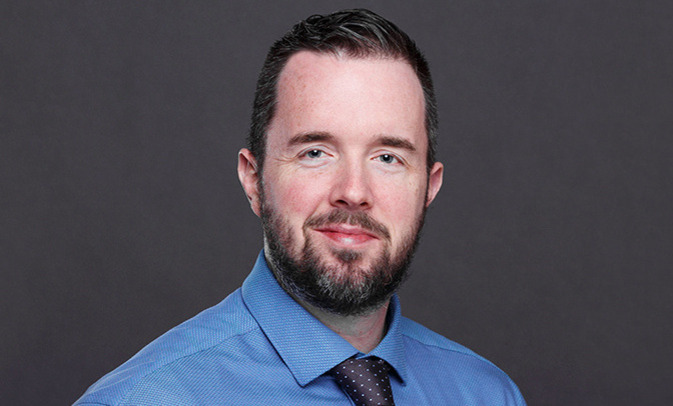How Top Hat Content Incorporates DEI and Career Readiness in Public Speaking
1,300+
students taught in COMM 115 in fall 2023
60
class sections managed in fall 2023
4
semesters using Top Hat’s Inclusive Public Speaking Interactive eText

The Challenge
Finding a pragmatic Public Speaking text to empower undergraduates and graduate teaching assistants
Helping to shape the next generation of civically-engaged citizens is no easy feat. Now add to that the challenge of supporting dozens of graduate teaching assistants (GTAs) who must develop both theoretical and practical lessons that show how public speaking functions in academia, the workplace and the spaces in between. This is the situation Gordana Lazic, Assistant Professor in the Department of Communication, Media and Journalism, and Basic Course Director at Missouri State University, found herself in. She teaches Public Speaking as part of a General Education requirement. As such, more than 1,300 undergraduate students are enrolled in her course during the fall 2023 semester.
As a professor with a personal and professional mission to advance diversity, equity and inclusion (DEI) in education, she found her static textbook fell short in tackling timely topics and taking into account students’ own intersectional identities. Part of her commitment to furthering equity in the classroom also involves reducing course fees—in the form of expensive print texts—where possible. But that’s not all: Lazic’s team of GTAs were hampered by a print textbook that couldn’t be customized to speak to their diverse areas of expertise. Nor could they rely on their text to host timely discussions on preparing for a job interview.
In January 2022, Lazic and her team began piloting Top Hat’s Inclusive Public Speaking Interactive eText. They specifically evaluated the Top Hat Interactive eText on its attention to DEI and career preparedness, in-text interactivity and overall price tag.
The Solution
Making representation and career-readiness two cornerstones of the Public Speaking curriculum with Top Hat content
After a successful pilot, Lazic chose to make the text a required component across all 60 sections of her course starting in fall 2023. The Interactive eText prioritizes DEI through topics including intersectionality and adapting messages for diverse audiences. Inclusive Public Speaking also offers an avenue for hosting conversations on preparing for the workplace. “One specific assignment involves asking students to reflect on what they would do to prepare for a career interview: What would they wear? Where can they get help on campus? It’s a very effective exercise to connect material with skills,” says Lazic. Her team also appreciates the interactive nature of their new textbook, as evidenced by a land acknowledgement activity. “Students are asked to research the area they’re located, take a screenshot, and upload to Top Hat. It’s a way of acknowledging where they’re situated while reflecting on their own identity,” she says.
Lazic enjoys customizing chapters in response to student needs. For example, if students struggle to grasp a topic related to persuasive communication, she’s able to add in additional questions in the chapter quiz. If she wants to provide additional examples on how bias intersects with public speaking, she can easily add in videos, diagrams or case studies. “I sometimes reverse the order of ideas presented and can clarify the language and conceptual frameworks used throughout,” she says. GTAs design lessons based on the themes covered within their text, which they view as their north star when it comes to discussing topics including identity, culture and society. After class ends, students complete chapter readings with embedded quizzes and discussions, preparing them for what’s to come in their next lesson.

The Results
A textbook that connects the dots between theory and real world practices
Since adopting a Top Hat Interactive eText, students arrive to class knowing where they stand academically and where their learning gaps are. For GTAs, they’re better able to lead critical and impactful conversations. “GTAs are so pleased with the change in text because of its relevance, the examples that connect the material to the real world and its ability to address topics with diversity, equity and inclusion in mind,” Lazic enthuses. When asked about how Inclusive Public Speaking helps them deliver more meaningful lessons, one of her GTAs shared the following. “Among the benefits is the ability to monitor students’ engagement through its online features, ensuring that they are keeping pace with the course. The textbook is easy to use and gets straight to the point. It doesn’t drag on with complicated terms or long explanations. Simply put, this textbook is more inclusive!”
Whether it be adding in a case study to prepare students for the workplace or a video that went viral this past weekend, Lazic has enjoyed adapting the material to fit her course needs. Her GTAs couldn’t agree more. “The Top Hat textbook provides a great framework of material for someone who does not have extensive teaching experience in public speaking. The textbook is filled with examples and scenarios of public speaking that create a modern and culturally relevant representation of public speaking,” another GTA shared. Above all, Lazic and her team feel content knowing that Inclusive Public Speaking is helping to shape the next generation of ambitious, diverse and literate communicators.
Among the benefits is the ability to monitor students’ engagement through online features, ensuring that they are keeping pace with the course. The textbook is easy to use and gets straight to the point. It doesn’t drag on with complicated terms or long explanations. Simply put, this textbook is more inclusive!









